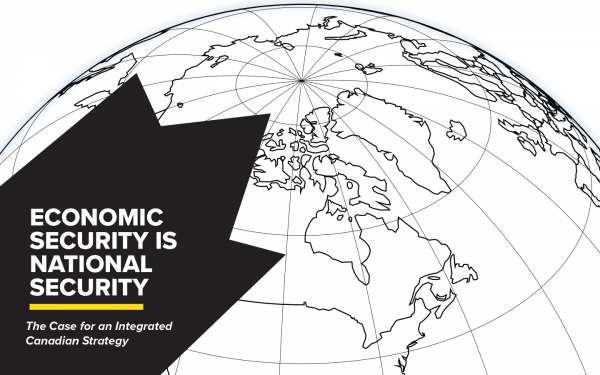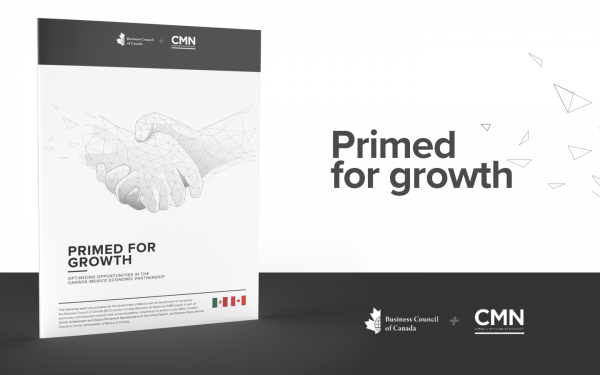The Canada-United States trade relationship and the idea of a trade enhancement agreement
A policy proposal of the Business Council on National Issues
Introduction
Interest in bilateral trade with the United States is growing in Canada for several reasons. There is, for example, widespread recognition that with the full implementation of the Tokyo Round tariff cuts by 1987, the tariff protection afforded many Canadian industries will be significantly reduced. By then, some 80 percent of Canada’s industrial exports to the United States will be tariff free, and almost 95 percent will face duties of 5 percent or less. In the case of United States industrial exports to Canada, the comparable figures will be 65 percent entering duty free, and an additional 26 percent facing tariffs of 5 percent or less. Thus, at least with respect to tariffs, bilateral trade will be substantially free by the late 1980s, regardless of future agreements that may be reached between the two countries.
Canada is one of the few industrialized countries which does not enjoy free and secure access to a market of at least 50 million people. At the same time, many important segments of the Canadian manufacturing sector are increasingly confident that it can compete effectively in the United States market. Recent polls also indicate that the Canadian public favours closer economic relations with the United States. The United States is, and will remain, Canada’s predominant trading partner. The $120 billion in. two-way trade represents approximately 65 percent to 70 percent of Canada’s imports and exports. (Although the percentages are not as high – roughly 20 percent – for the United States, Canada is the United States’s largest trading partner.) It has also been Canada’s fastest growing export market since 1980. Because of this, the Canadian business community is increasingly concerned to assure improved and continued access to the vital United States market in the years ahead.
Canadian business must think of the North American market as its home market. From this larger base, Canadian exporters will be better placed to launch initiatives in third markets. In fact, a successful bilateral commercial strategy will enhance the viability of other initiatives such as the “Third Option”.
A related factor that has affected the recent evolution of Canadian trade policy is the growth of protectionism in the United States. No country is as vulnerable to this trend as Canada, yet in most instances United States protectionist policies and legislation are not primarily aimed at Canada.
Because the bilateral relationship is not governed by an overall trade agreement or framework, there is no way that Canada can realistically expect to obtain exemptions from United States trade rules or legislation. The desire or, more accurately, the hope that Canada can somehow “get behind” United States non-tariff barriers and protectionist policies is a major factor stimulating Canadian interest in closer bilateral trade relations.
Sectoral trade discussions
In a break with previous official Canadian policy, the federal government has expressed interest in negotiating free trade with the United States in selected industrial sectors. The Canadian Minister for International Trade and the United States Trade Representative, William Brock, agreed that their officials will jointly examine the merits of sectoral free trade in four specific areas – steel, farm equipment and inputs, computer services, and government procurement practices particularly as they relate to urban mass transit systems. It is too soon to determine the eventual outcome of these studies. One possible outcome is that agreement could be reached that free trade arrangements should be pursued in one or more sectors. Any ensuing agreement could stand on its own or be a model for other sectors. The list of sectors is not exhaustive; more could be added at a later date. Another conclusion of the studies could be that there is no basis for attempting ·to negotiate sectoral free trade arrangements. Equally possible is the result that a sectoral free trade agreement would be judged as incompatible with our G.A.T.T. obligations. Nonetheless, the Canadian business community has generally welcomed the sectoral initiative because it is perceived as a step towards improved trade relations with the United States.
The possibility of a broader approach to bilateral trade arrangements
For the past 18 months, the Business Council’s Task Force on Industrial Development and International Trade has spent considerable time studying the Canada – United States trade relationship. The Task Force has concluded that the status quo is not viable. As noted above, progressive tariff cutting exercises under the auspices of the G.A.T.T., including the recent M.T.N. round, have resulted in a dramatic erosion of the tariff protection that was once considered essential to the viability of Canadian manufacturing. Two other things have occurred simultaneously to compound the current situation.
Non-tariff barriers have become relatively much more significant, and, with the recent recession, protectionism has shown an upsurge. With the great stake Canada has in the United States market, Canadian exporters are often the most vulnerable, even when the United States action is aimed elsewhere, The Business Council is anxious to explore the concept of a bilateral Trade Enhancement Agreement (T .E.A.) that would aim to establish some principles to govern Canada/United States trade relations, to identify areas where detailed bilateral negotiations could take place, and to create a mechanism through which negotiations could be held and agreements reached and monitored. Such an agreement could assist in the reaching of bilateral agreements and understandings in respect of various important trade issues and irritants. Perhaps the most significant benefit of a Trade Enhancement Agreement is that it would provide a mechanism and the impetus for the realization of future progress in bilateral trade liberalization.
What is T.E.A.? It represents the injection of political will into the process of liberalizing trade with the United States on a broader basis. It is complementary to, and builds upon, the sectoral trade talks which have already been initiated by the two governments. It would commit the two governments, as well as the respective private sectors, to an examination of the advantages and disadvantages of liberalized Canada/United States trade. It establishes a forum for discussion of trade matters which can defuse irritants before they become major problems. It would also provoke an intelligent and informed public discussion of this important dimension of our relations with the United States.
What T.E.A. is not: It is not a proposition to create a free trade area with the United States, whereby all tariffs between the two countries would be gradually eliminated. Rather, it would allow the merits of this to be examined; the conclusion might very well favour such an option. Then again it might not. It is not a proposal to advocate a common market or customs union which would involve the free movement of goods, labour and capital, a common external tariff, and the concomitant harmonization of other policies. It is clearly not a suggestion for political integration between the two countries, nor is this likely even if a free trade option were eventually to be adopted. The Canadian Standing Senate Committee on Foreign Affairs examined three free trade arrangements between big and small trading partners and concluded “all three examples resulted in expanded trade for the small partner. None … resulted in any discernible political integration.”
The Business Council’s Task Force sees a number of positive benefits emanating from T.E.A. The process will make the United States more aware of Canadian interests and, in itself, might assist in stemming protectionism. The process could lead to other benefits: it would promote expanded trade; it would facilitate the adjustment process which will occur in the Canadian industrial scene in any case; it will help achieve better security of access to the vital United States market; it will demonstrate that both governments believe in trade liberalization and are committed to positive measures to counter protectionism; and it will contribute to a necessary and rational public debate on Canada’s trade policy options.










